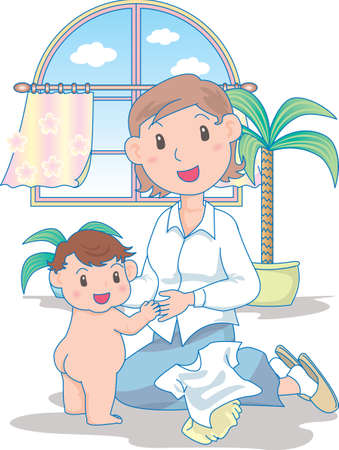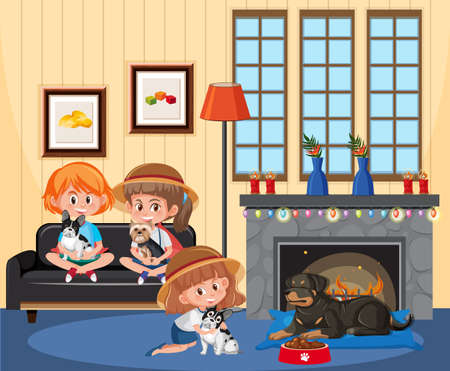Understanding Babyproofing Basics
When it comes to raising little ones, safety always comes first—especially in your living room, where family life happens. Babyproofing is more than just a checklist; it’s about creating a nurturing environment where your child can play, explore, and learn without unnecessary risks. Babies and toddlers are naturally curious, and their drive to discover the world helps them grow. By babyproofing your living room, you’re not only protecting them from hazards like sharp corners or accessible outlets, but also giving them the freedom to move around with confidence. Think of babyproofing as setting up a real-life game level: you remove obstacles and dangers so your little player can focus on having fun and leveling up new skills. This supportive space encourages healthy development—physically, emotionally, and cognitively—while giving parents peace of mind. Understanding the basics of babyproofing sets the foundation for every other step you’ll take in transforming your home into a safe haven for your child’s growth.
Identifying Common Living Room Hazards
Before you start babyproofing, it’s important to look at your living room from a baby’s point of view. Babies are naturally curious and love to explore every nook and cranny. That means it’s up to you to spot potential dangers before little hands find them! Here are some of the most common hazards that can be found in many American living rooms:
| Hazard | Why It’s Dangerous | How to Spot It |
|---|---|---|
| Sharp Furniture Edges | Babies learning to walk or crawl can bump into sharp corners, leading to cuts or bruises. | Coffee tables, TV stands, and side tables with pointed edges. |
| Loose Cords | Cords from blinds, electronics, or chargers can pose strangulation or tripping risks. | Cords hanging from windows, lamps, or behind furniture. |
| Small Objects | Tiny items are choking hazards for babies who put everything in their mouths. | Coins, toys with small parts, buttons, batteries on low shelves or the floor. |
| Accessible Outlets | Open electrical outlets invite curious fingers and could cause electric shock. | Wall sockets at ground level without covers. |
Take a few minutes to get down on your hands and knees and look around the room as your baby would. You might be surprised at what you notice! Remember, spotting these hazards early is the first step toward creating a safe—and fun—play space where your little explorer can grow and learn with confidence.

3. Choosing the Right Safety Gear
When it comes to babyproofing your living room, selecting the right safety gear is a game-changer for creating a secure and stress-free play area. American homes come in all shapes and sizes, so its important to choose products that fit your unique space. Start with outlet covers—these are must-haves to prevent curious little fingers from getting into electrical sockets. Look for tamper-resistant designs that blend in with your décor and can’t be easily removed by toddlers.
Next up, baby gates. Whether you live in an open-concept apartment or a two-story house, sturdy baby gates help keep your child away from staircases or rooms that aren’t kid-friendly. Pick adjustable gates that are easy to install and meet U.S. safety standards for added peace of mind.
Don’t forget about corner protectors. Coffee tables and TV stands can be at eye-level for babies who are just learning to stand and walk. Soft, impact-absorbing corner guards reduce the risk of bumps and bruises while blending seamlessly with modern furniture styles.
Finally, use furniture anchors to secure heavy items like bookshelves, dressers, and TVs to the wall. Tip-over accidents are a major concern in American households, but anchoring furniture ensures stability even during those energetic play sessions.
By choosing the right mix of safety gear, you’re not just protecting your baby—you’re also setting up an environment where they can explore, learn, and grow confidently every day.
4. Setting Up a Safe and Inviting Play Area
Creating a safe and inviting play area in your living room is all about striking the perfect balance between fun and protection. Start by choosing a dedicated spot away from sharp corners, electrical outlets, and heavy furniture. Lay down soft play mats or foam tiles to cushion little tumbles—these not only protect your child but also add a pop of color to your space! Next, arrange age-appropriate toys within arm’s reach and rotate them regularly to keep things fresh and exciting. Remember, less is more: having fewer toys out at once encourages deeper exploration and minimizes clutter-related tripping hazards.
Play Area Essentials: What to Include
| Item | Purpose | Pro Tips |
|---|---|---|
| Soft Play Mats/Rugs | Cushion falls and define play space | Choose non-slip, easy-to-clean options |
| Low Shelving or Bins | Keep toys organized and accessible | Label bins for easy clean-up (even toddlers can help!) |
| Pillows & Soft Seating | Create cozy reading or cuddle nooks | Avoid small parts that could be choking hazards |
Toy Arrangement Strategies
- Place larger, softer toys along walls to act as gentle bumpers.
- Group smaller toys by type in clear bins so your child can easily see their options.
- Keep favorite books or comfort items within reach on lower shelves.
Encouraging Healthy Exploration
Your living room play area should inspire curiosity while keeping safety first. Switch out toys every week or two to spark new interests and skill-building. Incorporate sensory-friendly elements like textured mats or musical toys to support learning through play. Most importantly, set up the space so you can supervise easily—being present turns every moment into an opportunity for connection and growth.
5. Maintaining and Updating Your Babyproofed Space
Creating a safe play area in your living room is not a one-and-done project—it’s an ongoing adventure! As your baby becomes more mobile, curious, and clever, your babyproofing needs will evolve too. Here’s how you can stay ahead of the game and keep your space both fun and secure.
Schedule Regular Safety Checks
Set a reminder to walk through your living room every few weeks. Look for loose outlet covers, cabinet locks that aren’t snapping shut, or furniture that may have shifted over time. If you’ve had guests or rearranged furniture, double-check those areas for new hazards.
Watch Your Child in Action
The best way to spot potential dangers is to observe your child while they play. Are they starting to pull themselves up on the coffee table? Can they reach higher shelves now? Use these moments as clues for what needs to be adjusted next.
Adapt to Each New Milestone
Every new skill—from crawling to cruising to walking—opens up new possibilities (and risks!). When your child starts reaching doorknobs or climbing onto couches, add door knob covers or anchor heavier furniture. Swap out soft baby toys for age-appropriate options as your little one grows.
Keep Up with Product Recalls and Updates
Stay informed about the latest safety recommendations by checking resources like the U.S. Consumer Product Safety Commission (CPSC) website. Register your baby gear so you’ll get notified of any recalls or important updates.
Embrace Flexibility
Your living room will constantly change as your child develops. Embrace this growth mindset—babyproofing isn’t about perfection; it’s about progress! By staying proactive, you’ll create a space that’s always ready for safe exploration and play.
6. Encouraging Independent Play With Peace of Mind
One of the greatest gifts you can give your baby is the freedom to explore and play independently, all within a safe and thoughtfully babyproofed living room. When you’ve taken the time to secure furniture, cover outlets, remove choking hazards, and create soft landings, you’re not just protecting your child—you’re also opening up a world where curiosity can flourish. A well-babyproofed environment means you don’t have to hover every second; instead, you can watch from a comfortable distance as your little one learns and grows.
Fostering Curiosity and Confidence
Babies learn through exploration. By making your living room safe, you’re encouraging them to reach for toys, crawl under tables, and pull themselves up with confidence. Every new movement—rolling, crawling, cruising—builds their motor skills and problem-solving abilities. This kind of hands-on learning is crucial for development and helps spark a lifelong love of discovery.
Supporting Motor Skill Development
A secured play area allows your child to practice moving around without constant intervention. Whether they’re pushing a toy truck across the carpet or stacking blocks on a soft rug, each action strengthens muscles and coordination. The more freedom they have to try new things safely, the faster they’ll develop both fine and gross motor skills.
Peace of Mind for Parents
Knowing your living room is babyproofed brings peace of mind that’s truly priceless. You’ll feel confident letting your child play independently while you manage other tasks nearby or simply enjoy watching their milestones unfold. Remember: Babyproofing isn’t about restricting fun—it’s about creating a supportive space where both you and your little explorer can thrive together.

